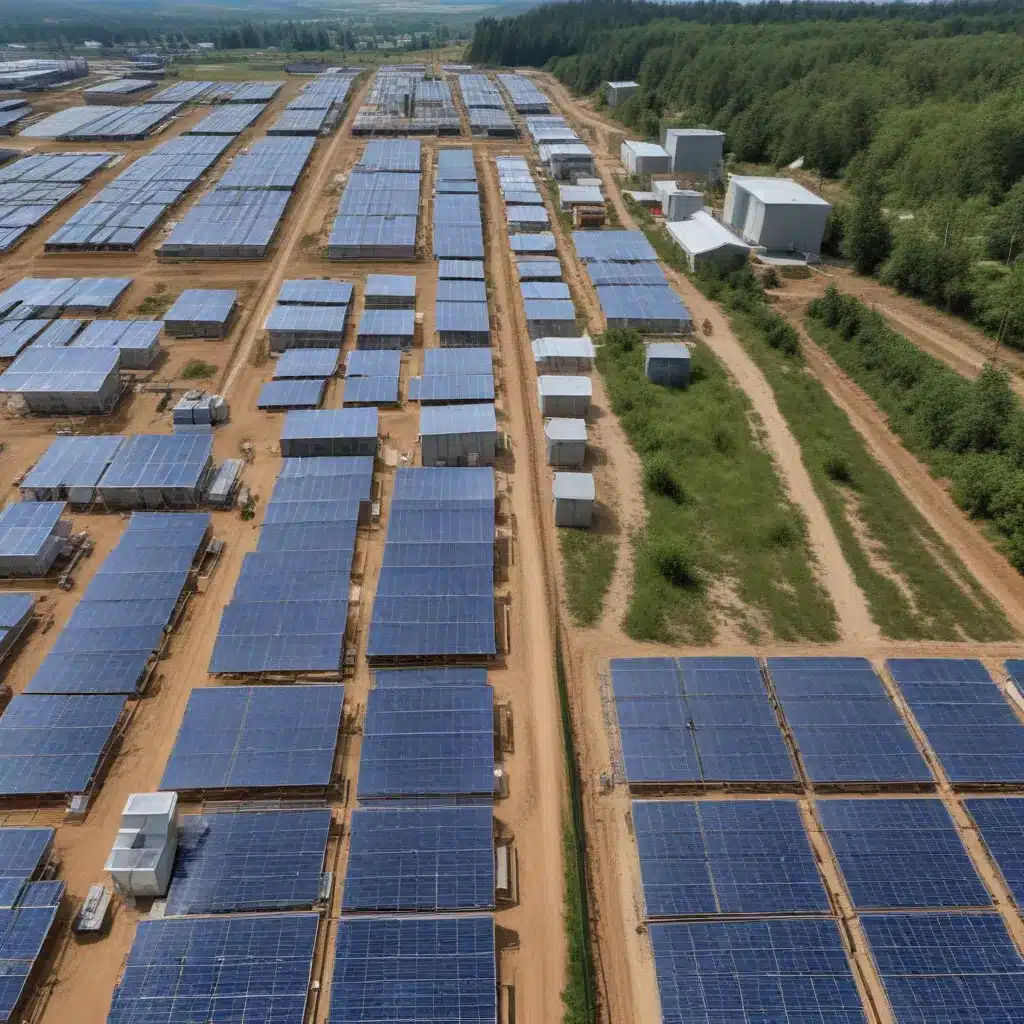
As Europe accelerates its shift toward clean energy to meet ambitious decarbonization goals, the integration of energy storage and renewable power sources is crucial for building a resilient, flexible electricity grid. Renewable energy technologies like wind turbines and solar photovoltaic panels have proliferated across the continent, driven by declining costs, supportive policies, and growing public demand for sustainable power. However, successfully integrating these intermittent resources while maintaining grid stability presents significant technical, operational, and regulatory challenges.
Energy storage systems can play a pivotal role in overcoming these barriers, enabling grid operators to better manage the variability of renewable generation and enhance the overall resilience of the power network. By strategically deploying a diverse portfolio of storage technologies—including lithium-ion batteries, pumped-hydro storage, and thermal energy storage—utilities can smooth out fluctuations in renewable output, provide fast-acting frequency regulation, and shift energy generation to meet peak demand.
Grid Resilience through Energy Storage
The integration of energy storage is crucial for enhancing grid stability and mitigating the intermittency inherent to many renewable energy sources. When wind and solar generation suddenly drops due to changes in weather conditions, energy storage can quickly respond by discharging power to the grid, preventing frequency deviations and maintaining a reliable supply of electricity. Conversely, when renewable production exceeds immediate demand, storage systems can absorb the excess generation, preventing wasteful curtailment.
Furthermore, energy storage can play a key role in frequency regulation, a critical grid service that balances supply and demand in real-time. By rapidly responding to grid signals, storage systems can inject or withdraw power to keep system frequency within narrow bounds, ensuring the reliable operation of connected devices and equipment.
Optimizing Grid Flexibility
Beyond enhancing resilience, energy storage can also contribute to greater grid flexibility, enabling system operators to more effectively manage the complex interplay of supply and demand. Demand-side management strategies, facilitated by storage, empower consumers to shift their energy use patterns, reducing peak loads and supporting the integration of renewable resources. Through time-shifting of energy storage, grid operators can store excess renewable generation during off-peak hours and dispatch it during periods of high demand, effectively “leveling” the load profile and reducing the need for costly peaking power plants.
Additionally, diversifying the renewable energy mix—by combining complementary sources like wind, solar, and hydropower—can help mitigate the inherent variability of individual technologies, further enhancing the flexibility of the overall system.
Benefits of Integrated Energy Systems
The seamless integration of energy storage and renewable energy can deliver significant benefits, both in terms of system efficiency and environmental sustainability.
Enhanced System Efficiency
By reducing the curtailment of renewable energy, energy storage can improve the overall utilization of generation assets, maximizing the return on investment for renewable energy projects. Additionally, the ability to shift energy generation to periods of high demand can optimize the dispatch of power plants, leading to more efficient use of the grid infrastructure.
Environmental Sustainability
Increasing the penetration of renewable energy is crucial for Europe’s decarbonization efforts, and energy storage is a key enabler in this regard. By mitigating the variability of renewable sources, storage technologies can facilitate the integration of higher shares of wind and solar power, reducing the reliance on fossil fuel-based generation and associated greenhouse gas emissions.
Moreover, the circular economy principles embodied in advanced energy storage solutions, such as the recycling of battery materials, can further enhance the sustainability of the energy transition.
Technical Considerations for Integration
Realizing the full potential of integrated energy systems requires advancements in storage technology, grid modernization, and supporting infrastructure.
Energy Storage Technologies
A diverse portfolio of storage technologies, each with its own strengths and use cases, is essential for optimizing grid resilience and flexibility. Electrochemical storage, primarily in the form of lithium-ion batteries, provides fast-acting, high-power response for frequency regulation and short-duration energy shifting. Mechanical storage solutions, such as pumped-hydro and compressed air energy storage, offer longer-duration, large-scale energy storage capabilities. Thermal storage technologies, which leverage heat or cold, can also play a role in optimizing the utilization of renewable energy.
Grid Modernization and Infrastructure
Integrating energy storage and renewable energy also requires investments in grid modernization and supporting infrastructure. Smart grid technologies, including advanced metering, communication systems, and intelligent control algorithms, can enhance the visibility and responsiveness of the power network, enabling more effective management of distributed energy resources. Upgrades to transmission and distribution infrastructure, as well as the deployment of microgrids and other decentralized energy systems, can also facilitate the integration of renewable energy and storage at the local level.
Economic and Policy Drivers
The successful integration of energy storage and renewable energy is underpinned by a combination of market incentives, supportive regulations, and innovative financing strategies.
Market Incentives and Regulations
Across Europe, countries have implemented various policy mechanisms to drive the development and deployment of energy storage and renewable energy technologies. Renewable energy targets and mandates, such as the European Union’s goal of reaching at least 32% of final energy consumption from renewables by 2030, provide a clear market signal and create demand for these solutions. Complementary energy storage incentives and pricing mechanisms that compensate the grid services provided by storage systems can further unlock their economic potential.
Investment and Financing Strategies
Mobilizing the substantial capital required for the integration of energy storage and renewable energy will necessitate a range of innovative financing strategies. Public-private partnerships, novel business models, and tailored financing mechanisms, including loans, grants, and tax credits, can help bridge the gap between project costs and the available revenue streams, ensuring the financial viability of these transformative investments.
As Europe continues its transition toward a sustainable, low-carbon energy future, the integration of energy storage and renewable energy will be a crucial pillar in building a resilient and flexible power grid. By optimizing the synergies between these complementary technologies, grid operators, policymakers, and industry stakeholders can unlock a cleaner, more efficient, and more reliable energy system that supports the region’s ambitious decarbonization goals.






